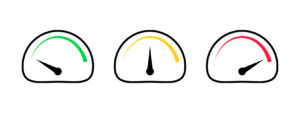
To ensure that you may promptly and effectively resume your work process, Infiniwiz makes a commitment to our clients that we will resolve all of your concerns in a reasonable length of time so that there is little to no downtime. However, it is important to understand that there is some request that may demand attention first and may be more critical to fix than other minor issues when a request comes in. We attempt to be fair and respond to every issue in the most organized and effective way possible so that one of our engineers can start addressing your issue. As a result, Infiniwiz has developed a service level agreement response plan (SLA Response Plan) that details response times, keeping clients informed as to the status of their requests.
Our service coordinator will analyze your issue when we first receive your email, call, or chat message, and convert it to a ticket in our system. When the coordinator is finished, they will decide if your issue needs to be fixed right away or if it can wait until a more critical issue is fixed. The service coordinator will choose an issue’s severity level based from this chart.

We also have a chart that aids the service coordinator in determining what qualifies as a critical for a specific issue. In essence, a 3x3 chart with the x-axis representing urgency (how many people are affected) and the y-axis representing impact (depending on the type of issue and if there could be a workaround) is present for the service coordinator to view and determine. A critical issue would be, for instance, is if there was a service issue that rendered staff to perform their jobs such an outage. The issue would, however, be of low urgency if, for example, a printer malfunctioned and needed to be fixed but did not prevent the team from working.
Here is an example of the SLA grid and how it helps the service coordinator determine how critical the issue is.

Additionally, our team considers time and specific users.
We will prioritize issues that users have been reporting for a few days before moving on to problems that have just been present for a short while.
Furthermore, since management is essential and vital to how the organization functions, we will view a single user issue—say, a manager experiencing downtime as a result of a problem—as more serious.
We have SLA response time for specific technical issues so that clients are aware of when we will be able to fix a certain issue.
We have a service level agreement that details the level of urgency associated with each issue as well as the normal response time. On our website, we provide estimated response timeframes for when we will address a service ticket. For instance, we frequently fix significant problems within 15 minutes. It can take up to 24 hours if a problem is minor and merely causes inconvenience, such as when a person wishes to modify their email signature.
Overall, the different levels of urgency and impact influence how soon a ticket will be worked on.
I have provided a few examples from our website on certain SLA response times for different technical issues.




Overall, we treat all support tickets seriously in order to prevent your business from having much downtown. As a result, we are realistic about our ability to respond to your problem in a timely and efficient manner, giving it the attention it needs to be fixed as soon as feasible.




